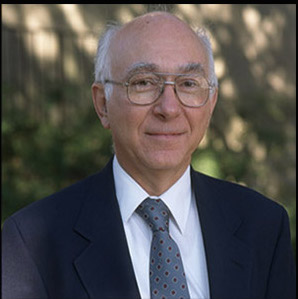NASA Space Mission Named for the Late LSU Professor Arlo Landolt
Landolt Mission will launch artificial star into Earth’s orbit seeking to uncover the secrets of dark energy.

The recently approved Landolt NASA Space Mission, housed at George Mason University, will put an artificial “star” in orbit around the Earth. This artificial star will allow scientists to calibrate telescopes and more accurately measure the brightness of stars ranging from those nearby to the distant explosions of supernova in far-off galaxies. By establishing absolute flux calibration, the mission will begin to address several open challenges in astrophysics including the speed and acceleration of the universe expansion.
Named for late astronomer Arlo Landolt, who put together widely used catalogs of stellar brightness throughout the 1970s through the 1990s, this mission will launch a light into the sky in 2029 with a known emission rate of photons, and the team will observe it next to real stars to make new stellar brightness catalogs. The satellite (artificial star) will have eight lasers shining at ground optical telescopes in order to calibrate them for observations. The effort will not make the artificial stars so brightly to see with the naked eye, but one can see it with a personal telescope at home.
"The NASA Landolt Mission, named after renowned Louisiana State University astronomer Arlo Landolt, aims to significantly enhance the accuracy of photometric measurements of absolute stellar fluxes. Utilizing state-of-the-art technology, the Mission builds upon Landolt's pioneering work in photometry and standard stars, which will in turn ensure precise calibration for millions of stars and support critical astronomical research for decades to come," said Associate Professor Tabetha Boyajian, LSU Department of Physics & Astronomy and member of the Landolt NASA Space Mission research team.
Notorious throughout the astronomical community for his discoveries, astronomers and physicists worldwide continue to use Landolt’s series of papers which established the “Landolt Photometric Standard Star Catalog” and his standard stars are among the most heavily used photometric standards throughout the globe. Landolt was the first discoverer of a pulsating white dwarf, when he observed in 1965 and 1966 that the luminosity of HL Tau 76 varied with a period of approximately 12.5 minutes.
Scientists know the universe is expanding, which is measured by calculating the brightness of numerous stars and by the number of photons-per-second they emit. According to Peter Plavchan, a George Mason associate professor of physics and astronomy and the Landolt Mission Primary Investigator, more accurate measurements are needed for the next breakthroughs.
“This mission is focused on measuring fundamental properties that are used daily in astronomical observations,” said Eliad Peretz, NASA Goddard mission and instrument scientist and Landolt’s deputy principal investigator. “It might impact and change the way we measure or understand the properties of stars, surface temperatures, and the habitability of exoplanets.” The artificial star will orbit earth 22,236 miles up, far enough away to look like a star to telescopes back on Earth. This orbit also allows it to move at the same speed of the Earth’s rotation, keeping it in place over the United States during its first year in space. “This is what is considered an infrastructure mission for NASA, supporting the science in a way that we’ve known we needed to do, but with a transformative change in how we do it,” Plavchan explained.
The payload, which is the size of the proverbial bread box, will be built in partnership with the National Institute of Standards and Technology (NIST), a world leader in measuring photon emissions.
With more accurate measurements, experts will use the improved data from the project to enhance understanding of stellar evolution, habitable zones or exoplanets in proximity to Earth, and refine dark energy parameters, setting a foundation for the next great leaps in scientific discovery. “When we look at a star with a telescope, no one can tell you today the rate of photons or brightness coming from it with the desired level of accuracy,” Plavchan, who is also the director of Mason’s Observatories in Fairfax, said. “We will now know exactly how many photons-per-second come out of this source to .25 percent accuracy.”
"Flux calibration is essential for astronomical research.” explained NIST’s Susana Deustua, a Physical Scientist in the NIST Remote Sensing Group. “We constantly ask: ‘How big? How bright? How far?’ and then ponder: ‘What is the universe made of? Are we alone?’ Accurate answers require precise measurements and excellent instrument characterization,” Deustua said. Learn more at landolt.gmu.edu
About Arlo U. Landolt: Landolt’s research was concerned with the measurement of stellar brightness and colors, i.e., stellar photometry. In the last 30 years, much of his time was spent in the improvement and the definition of photometric standard stars. These standard stars are used as calibration yardsticks when studying celestial objects, or indeed any objects projected against the celestial sphere, whose characteristics are unknown. For the case of physical celestial objects, one eventually can relate brightness and color measures to a variety of physical characteristics. These quantities in turn help determine stellar distance, and define a star’s place in stellar evolution. Research projects also are under way in the areas of star clusters, variable stars, novae, supernovae, and eclipsing binaries.
Read the full Memoriam of Arlo Landolt: LSU Mourns the Loss of World-Renowned Astronomer Arlo U. Landolt
###
Adapted from a news release by George Mason University.
Contact
Mimi LaValle
LSU Physics & Astronomy
225-439-5633
mlavall@lsu.edu